Fix: Missing Search Tab ‘File Explorer (Windows 10 – 1909)’
The File Explorer of your system may not show the Search tab due to the design change by Microsoft, implemented with the Windows update 1909 and onwards.
The issue is that the users were habitual of auto search (where search results were shown as the user was typing the search query and different search syntax were guided) and the user can use the Search tab to customize his search even before executing the search but this technique was quite resource hogging on the system and as a design change. Microsoft has implemented a new functionality, in which the user must press the Enter key after keying-in the search query to bring out the hidden Search tab.
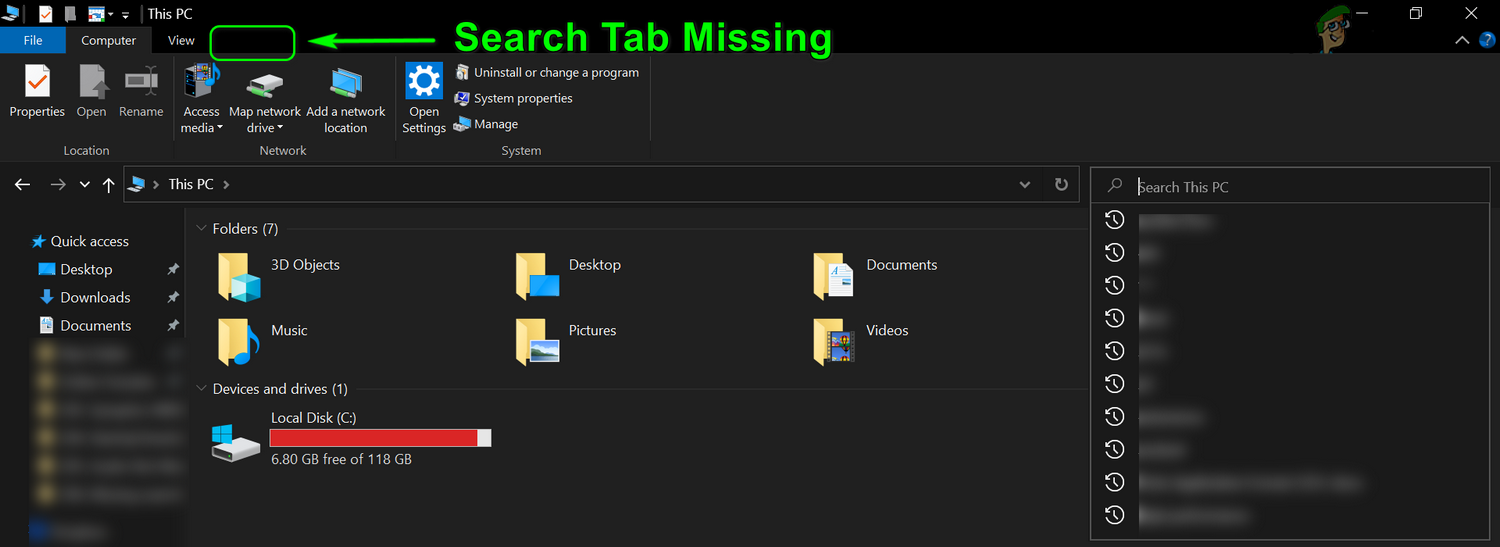
Before moving on with the solutions to add a search tab in the File Explorer, check if using the Details view in the View tab on the File Explorer satisfies your search requirements.
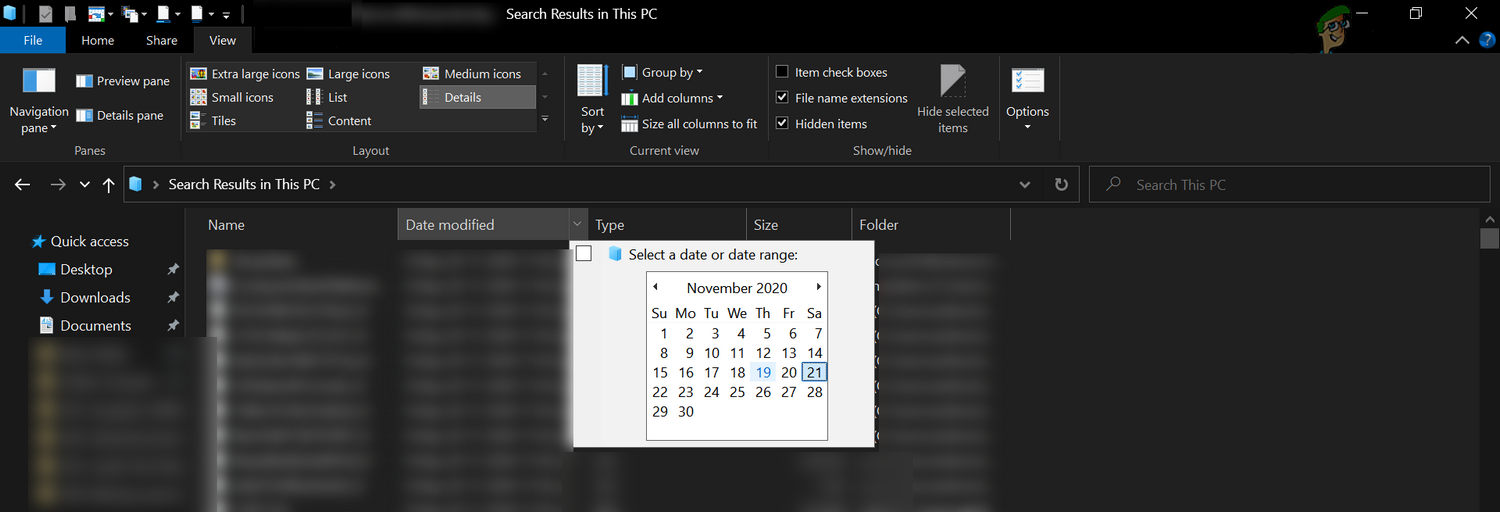
Solution 1: Press the Enter Key After Entering the Search Query
The issue at hand is the result of a design change (whether you like it or not) by Microsoft as the auto search (as search started when a user was typing) was a very resource-hogging technique. The procedure to search in the new design of the File Explorer is elaborated below:
- Open File Explorer and enter a sample search query in the search box.
- Now, press the Enter key or click on the arrow located at the right end of the search bar, and then the search tab will show up in the ribbon.

Press the Enter Key After Entering the Search Query to Bring Out the Search Tab - Then, customize your search by changing the search parameters in the Search tab. You can also use the advance search queries (like Kind:).
Solution 2: Add the Search Icon to Quick Access Toolbar
There is a simple technique that can help you to set the search parameters before executing the search. In this method, you can add the required search parameters to the Quick Access Toolbar of the File Explorer and then use these short-cuts to customize your search. The process is as under:
- Perform a sample search and hit the enter key (as discussed in solution 1).
- Then, the search tab will be shown on the File Explorer’s ribbon.
- Now, right-click on any of the search parameters e.g. on Date Modified, and then choose to Add to Quick Access Toolbar.
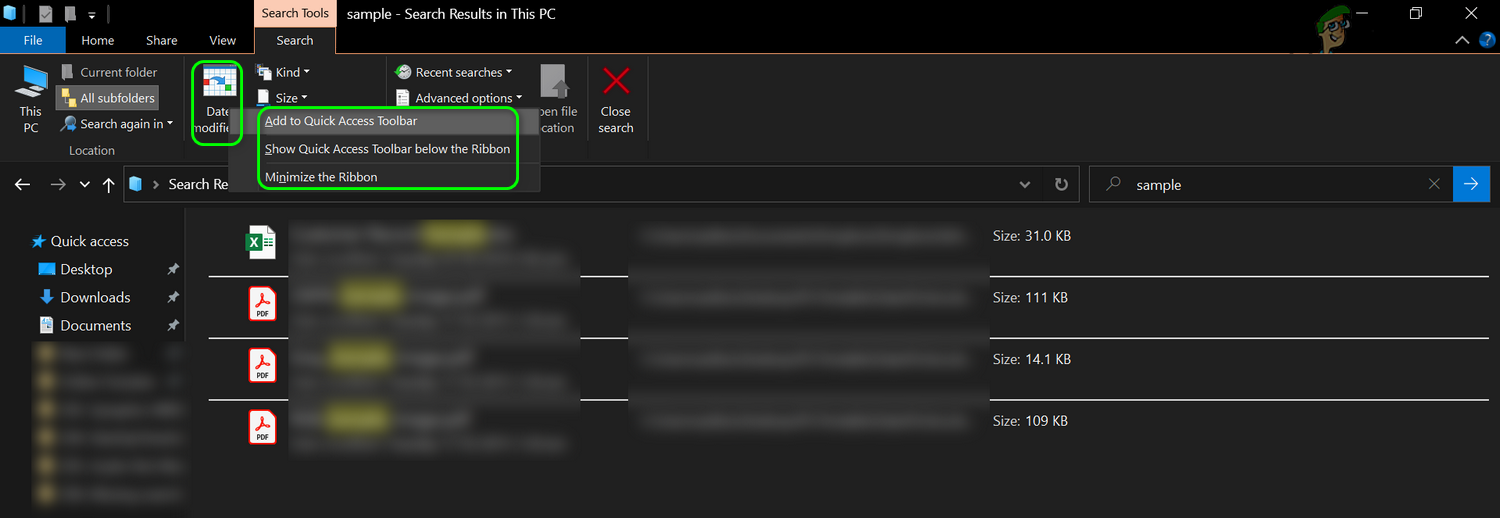
Add the Date Modified to Quick Access Toolbar - Now, the Date Modified parameter will be visible in the Quick Access Toolbar. Then add all the parameters to the Quick Access Toolbar (i.e. Kind, Size, and Other Properties) by following the above-mentioned steps.

Add the Search Parameters to Quick Access Toolbar - Then close the File Explorer and open it again.
- Now, all the search parameters are shown in the Quick Access Toolbar and you can click on it to add it to the search box and then perform the search.
- For example, you may click on the Date Modified icon and then in the menu, select Yesterday.
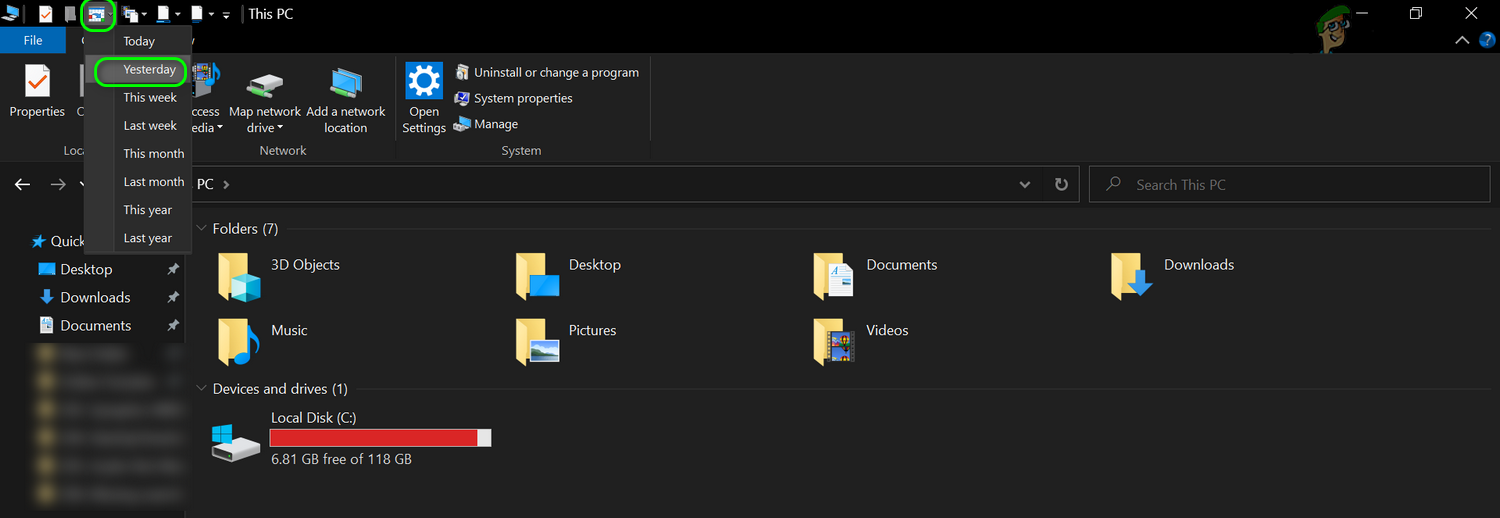
Click the Date Modified Search Parameter in Quick Access Toolbar and Select Yesterday - Now,
datemodified:yesterday
will be shown in the search bar and you can type the search query after that.

Enter Your Search Query After the Search Parameter in the Search box - Similarly, you can add all the other search parameters in the search bar of File Explorer by clicking the relevant short-cut in the Quick Access Toolbar.
This method nearly brings back the older search functionality that you were using before the Windows update 1909 and onwards.
Solution 3: Revert to the Previous Version of Windows
The search behavior was changed in the Windows update from 1909 onwards. If you do not like the functionality, you can revert to the older version of Windows (if that is not a possibility, you may have to uninstall the particular update).
- Press the Windows key to launch the Windows menu and select the Gear icon to open Settings.
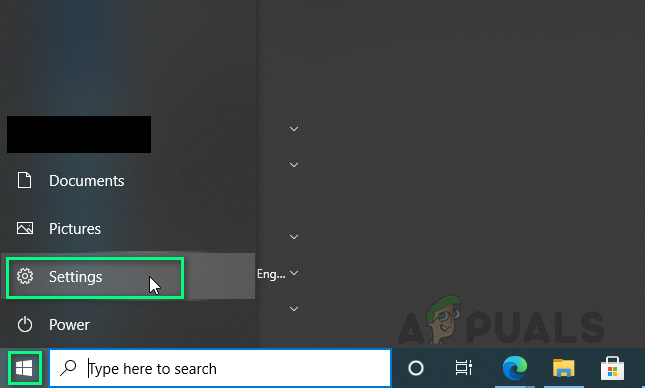
Opening Windows Settings - Now, select Update & Security, and in the right pane of the windows, choose View Update History.

Open View Update History - Then, click on Uninstall Updates and then select Enablement Package (KB4517245) update.

Uninstall Enablement Package (KB4517245) update - Now, click on Uninstall and then follow the prompts on your screen to uninstall the update.
- Then reboot your machine and upon reboot, check if the old search functionality is back to your system.
If you cannot find the update or does not want to use the approach, then try the method below to revert to an older version of Windows:
- Click on the Windows button to open the Windows menu and choose the Gear icon to open the system’s Settings.
- Now open Update & Security and then, in the left half of the window, select Recovery.

Open Update & Security.in Windows Settings - Then, under the option of Go Back to the Previous Version of Windows 10, click on Get Started button and then follow the on-screen prompts to revert to the older version of Windows.
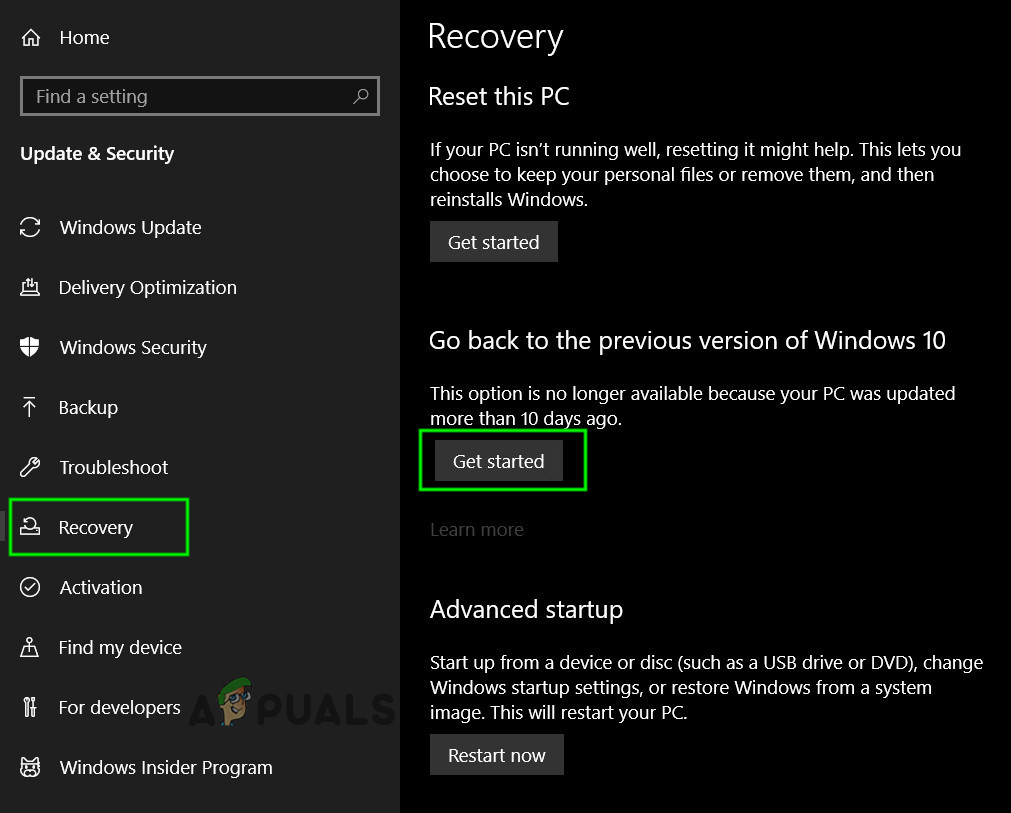
Click on Get Started in Go back to the Previous Version of Windows 10 - Upon completion of the process to revert to the older version, check if the older search functionality is back on your system.
If you are still not satisfied with the new search design, then you may try a 3rd party search utility (like agent ransack, Ultrasearch, Windows Indexer diagnostics tool from Microsoft Store, Locate32, etc.)





